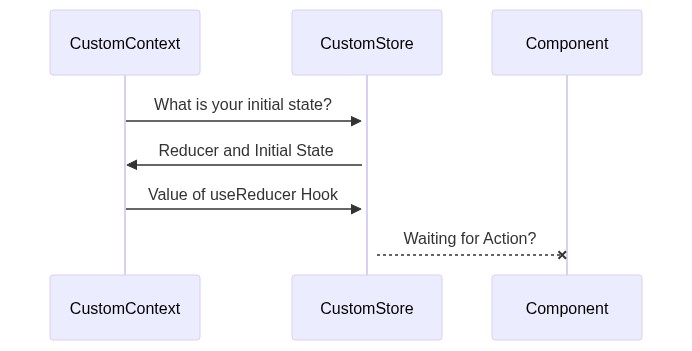testing
Install
npm install --save testingUsage
import React Component from 'react' import MyComponent from 'testing' { return <MyComponent /> }License
MIT © shafferchance
Global Light
The goal here is provide someone with a lightweight solution that will work out of the box all while bringing a high level of customizability to the table.
Goals of the library
- Be lightweight and customizable
- Have minimal/negible performance cost
- Ensure that integration is easy
- Function with or without customization
- Be Backwards Compatible, unless absolutely necessary to not be
Rationale
Are you tired of having to update your code frequently becasue React Router released a new version? Tired of getting way more functionality than required with Redux? Just curious, or something else? Welcome, the idea behind this very small collection of hooks and components is to give developers more choice for routing and state management past the well known solutions of Redux and React Router, while allowing developers to control the bloat within their application as well as not have to worry about updating their code quite as frequently, so that developers may work on what they want and not spend all day maintaining an old application. Thus this library will remain backwards compatibile for most versions and be split into modules to maintain small size if necessary. While they are many other solutions avaliable they tend to be good at one thing and try and conquoer one problem rather than solve multiple.
Current Tasks
- Bring over current code base
-
Make so single tag controls everything rather than dedicated fileSimplify props - Document code thoroughly (ish for now)
-
Integrate into a routing library at some pointRouting is in ish... - Integrate IndexedDB for serialization
- Investigate creating a collection of Contexts for mutation and access from one key
Future Tasks
- Create a way to pass to higher context on page, if possible
- Integrate component testing for a more proper check and examples
- Possbily move all routing into hooks (Have to see if this viable)
Global store
The reducer function built-in has a LIFO set with CRUD built-in that functions off of the value key in the action object sent inside of the reducer function:
- action object:
- {type: [Actions], [key]: [Value]}
- The above key is how the data will be stored
- setValue -or- SET:
- Will check if they value has been deleted by looking for a graveyard attribute on the data
- deleteValue -or- DELETE:
- Will add a graveyard attribute to the data and archieve the last known data-value
- recoverValue -or- RECOVER:
- Will remove the graveyard attribute and place the last value as the current value
Please review the sequence diagram below to see how this functions
If you wish to create a global store/context you can use the store object from the library, please use the following example:
; const App = { const initialState = // Properties ; // Reducer is optional and built into them // Logic return <Store stateI= initialState > children </Store> ; }Creating context
If you wish to create a context container for any component within the file import and use as follows:
; const App = { const reducer = { }; const initialState = ... ; // Logic return // Other outputs <CustContextContainer reducer= reducer initialState= initialState > // Children components </CustContextContainer> ; }This an example of how exactly to utilize the Context Container created. Depending on the context desired use the following:
- global, Global inside of
useCustomContext([context]) - routing, router, Router inside of
useCustomContext([context]) - preset, Preset inside of
useCustomContext([context]) - () will default to the Custom Context provider that access the next parent
CustContextContainer
Note: Eventually the above will not be necessary
; const App = { // Use this form and follow rules of hooks const Property useProperty = ; // Render function }Router Sequence Diagram
To utilize the Router
The router only needs routes passed to it. The rest will be handled automatically by the component. There
will eventually be Route objects to go into the Routing component. Although, the navbar component will
always be up to the user and accessible through the useCustomContext() hook within a
child element of the Routing component.
To create links for routing system use the Link component. This triggers
the context system's reducer function. The props are as follows:
- url: Url linked to new element within SPA
- name: Text to display as name of link
- linkClass: CSS class for button
For the routing component that is pre-built into this package please use as follows:
; const routes = ... id: Number path: String name: String component: ReactComponent ; const App = { return <Routing initialState= initialState routes= routes > ...<Link url= String name= String linkClass=String /> // Children </Routing> ; }Food for thought
Could Mutation Observers make this better and able to have little user intervention? How large of a chunk can a Mutation Observer reside over before performance starts taking a hit?
Contact Information
If you wish to help please feel free to reach out with the following:


